I'm having a tricky issue (bear with me as I'm new to MVC) with trying to use a controller (and a route subsequently) with the name PropertiesController.
I believe this is because there is a directory (which I can't really remove) called "Properties" in my solution. Is there a way round this?
The route setup is just one simple route:
routes.MapRoute(
"Default", // Route name
"{controller}/{action}/{id}", // URL with parameters
new { controller = "Properties", action = "List", id = "" } // Parameter defaults
);
and the error I get in IIS7 when requesting "http://localhost/aptment2/properties/" is:

Surely there is a way round this that I just can't find? Cheers.